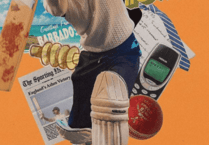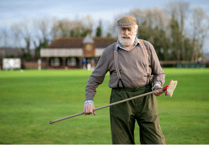There was no big crowd gathered in The Square last Thursday to wish one of Petersfield’s favourites a safe onward journey.
Carefully lifted from his horse by a crane, William III was gently deposited on a truck parked in The Square.
As if to protect him from the cold, his shoulders were covered with blankets and he was firmly secured to the flat-bed with a blue harness.
Despite missing his right arm, Sweet William – or Stinking Billy, depending on your historic perspective – managed to retain a regal disdain throughout the proceedings.
Ironically, King William died as an indirect result of coming off his horse. In the early morning of February 21, 1702, he was riding in the grounds of Hampton Court Palace when his horse stumbled upon a molehill, throwing him off violently.
The King broke his collarbone, caught a chill and died a few days later of pneumonia.
If only his attendants on that day had taken the same precautions as those who so scrupulously cared for his likeness on Thursday, perhaps his life would have been prolonged.
And so Petersfield loses part of its most familiar landmark. But only for a few months while William is restored to his former glory and returned in September, thanks to the repairs funded by Hampshire County Council.
As local representatives of the county council, councillors Oppenheimer and Mocatta were present to see that the former King got away, if not exactly in one piece, at least without incurring any further damage.
The plinth is not left empty. William’s horse remains and, if the sculptor took inspiration from one of the many equestrian portraits that exist of the King, then that horse has a name, Sorrel.
Sorrel, William’s favourite mount, was by all accounts a spirited beast, as is the current sole occupant of the plinth with its proudly-arched neck and daintily raised forehoof.
Penned in by scaffolding, Sorrel is unlikely to leap off the stone pedestal and gallop away in search of greener fields. But if he did, who could replace him until he could be reunited with his rider and led back to his rightful place?
I’ve always thought a now nearly-forgotten Petersfield resident, John Small, deserves some recognition in his home town.
John, who died in 1826 and whose grave can still be seen in St Peter’s graveyard, was an English professional cricketer who played for the famous Hambledon Club during the 18th century.
A cobbler by trade, he is credited as introducing to cricket the maximum width for a bat and the third wicket.
He made and sold bats and balls from his workshop off The Square.
As the bicentenary of his death approaches, isn’t it time John Small had his own memorial other than just his overlooked headstone?
Of course, I’m not for one moment suggesting our beloved statue should be permanently replaced, but it does sometimes attract the attention of those whose presence in the town we could do without.
I refer to the Orange Order, who have resumed their commemorative parades in The Square. I know we cannot stop them, but I am sure I am not alone in thinking there is no place for sectarianism or its representatives here in Petersfield.
We are a tolerant, respectful people and have arrived at a comfortable accommodation with the divisions of the past.
It is a distinction that was made consciously when, during a previous restoration of the statue in 1913, William’s baton, symbolising his military accomplishments, was replaced by a scroll which was thought to be more in keeping with his role as a preserver of the peace.
Let’s hope when William returns and is remounted on his faithful Sorrel, it is a scroll he grasps in his right hand and not a baton, and that we can go about our business under his shadow without attaching too much importance– or even knowledge – of what he once represented.





Comments
This article has no comments yet. Be the first to leave a comment.